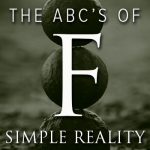
The term “flow” is associated with the work of Mihaly Csikszentmihalyi, the author of the book Flow: The Psychology of Optimal Experience. One definition of flow would be: the full absorption of an individual in an activity during which one loses one’s sense of time and experiences feelings of great satisfaction. We can see that flow could be a synonym for “feeling.”
The experience of flow is the experience of the timeless present moment, the experience of Simple Reality.
The equivalent of flow in the teachings of Buddha is called mindfulness. Walpola Rahula expresses it this way: “All great work—artistic, poetic, intellectual or spiritual—is produced at those moments when its creators are lost completely in their actions, when they forget themselves altogether, and are free from self-consciousness.”[i]
Zen practitioner, Ezra Bayda makes the connection to the Buddhist principle of no “I” or no “me.” “The absorption experience was equated with being totally in the moment. One explanation made it analogous to ‘just chopping carrots, where there is no separation between you and the carrots.’ More than one person gave the example of athletes, who are so absorbed in the activities that they enter ‘the zone,’ equating this state of flow with the experience of ‘no self.’”[ii]
Wayne Teasdale reminds us that mystics regularly experience flow or that connection to the Implicate Order which he calls the “unified field.” “Mystics would say the reason why the unified field has eluded the grasp of Einstein and others is that it is not something outside or beyond, not some other force, but consciousness itself.”[iii]
We will never be able to attain the ultimate human experience in the world of form outside of ourselves through the use of our intellect. That’s why science and technology cannot transcend the relative context of P-B. We are all mystics “at heart” searching for the connection to Simple Reality, our connection to the Implicate Order. We all long for our natural state of being and the experience of flow. That’s why Teasdale’s book is perfectly titled: The Mystic Heart.
[i] Rahula, Walpola. What the Buddha Taught. New York: Grove Weidenfeld, 1959, p. 72.
[ii] Bayda, Ezra. “The Art of Awareness.” Shambhala Sun. Boulder, Colorado, May 2006, p. 23.
[iii] Teasdale, Wayne. The Mystic Heart. Novato, California: New World Library, 1999, pp. 72-73.


